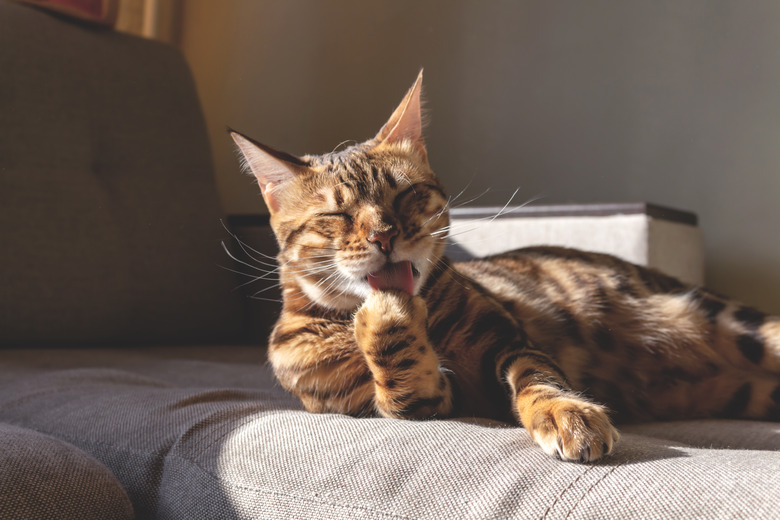What Does It Mean When A Cat Purrs?
Since kittens are born blind and deaf, purring is a way for them to communicate with their mother so they can find each other when it's feeding time. When do kittens start purring? Some kittens start purring when they're just a few days old, and others are usually purring by the end of the third week. As they get older, their reasons for purring change, and their purrs may be useful in a variety of situations.
So, what does it mean when cats purr? Purring may express a range of emotions. It might show that your cat needs to be fed or wants to tell you something, and its frequency range is thought to promote healing in cats and maybe even humans.
How do cats purr?
How do cats purr?
The soothing sound of a cat's purr begins in a region in the brain called the infundibulum, which is known as the purring center. The nerves send a signal to the diaphragm and the larynx (vocal cords), which is located at the opening of the windpipe, telling it to vibrate. This changes the amount of tension in the glottis (voice box). When air moves past the glottis, it creates the purring sound. A purring cat produces a sound every 30 to 40 milliseconds for 10 to 15 milliseconds each, and a purr can range in length, volume, pitch, and frequency depending on the cat's emotional state.
Purring expresses emotion
Purring expresses emotion
You might think that a purring cat is a happy cat, but you might be surprised to learn that isn't always the case. A cat's purring could convey very different emotions and moods.
When cats purr, their brain releases endorphins, which are known to relieve pain and improve mood. Before you assume you're petting a happy cat, consider the possibility that she is purring to soothe unpleasant feelings. Sometimes, cats purr when they're feeling scared or anxious. Purrs also vary in pitch. If a cat is feeling threatened by a dominant cat, her tense body may produce a purr in a higher pitch, while the purr of a cat who's relaxed and content may be low and rumbly.
Communicating through purrs
Communicating through purrs
Sometimes, cats purr as a way to get your attention so they can communicate something they need. This type of purring may sound more like a rapid, high-pitched chirping noise and may be accompanied by wide eyes or some light swatting with his paws. He may be asking you for food or letting you know that he's feeling frisky and wants to play.
Frequencies for healing
Frequencies for healing
Cats may purr as a mechanism for healing themselves. The average cat purrs at a frequency of 25 to 140 hertz. Frequencies within this range are understood to aid in healing broken bones, repairing tendons and joints, and healing wounds. This might explain why cats' bones are known to heal so quickly and rarely become diseased. Purring is also reported to help cats who have respiratory difficulties breathe easier.
These healing powers may extend to humans as well. There are some reports of breathing issues in humans improving after being near a cat who's purring. Similarly, some people's headaches have improved after laying their head down near a purring cat.
What does it mean when a cat purrs?
What does it mean when a cat purrs?
To figure out what your cat is feeling when she's purring, look for other signs to point you in the right direction. Does her body look relaxed? Is her purr high or low pitched? Are her eyes open or closed? Does she have food and water? If you're still unsure, ask your vet for guidance.
